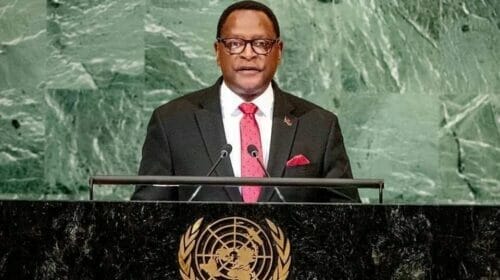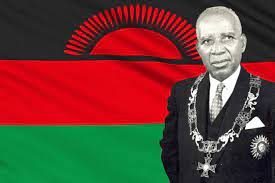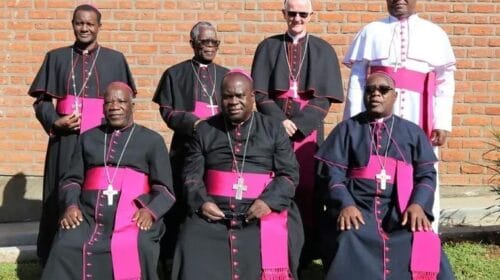Malawi must provide equitable access to education for children with disabilities

by Janet Zeenat Karim
It is no longer enough to have content knowledge or the love for teaching. (Parker J. Palmer “The Courage to Teach.” 2007)
SIXTY-TWO years ago, my brother Robert was first removed by the education system due to his severe multiple disabilities. As my father was serving a one-year detention sentence in Khami Rhodesia, my mom was at work, neighbourhood bullies bundled him into a wheel barrel and cycled around the rose garden. They then tipped the wheel barrel leading to Robert bumping his head on a stone. My sister and I watched crying (she was eight and I was six years old). He died three months later. Recently my son became blind following a malaria attack and a batch of bad chloroquine was administered. My parents, recalling what had happened to Robert, began to look for schools that catered for learners with disabilities. Fortunately, my son’s health was restored (elements for another article). Suffice it to say, while medical science has made leaps since my elder brother’s needles removal from school and death, the treatment and handling by governments around the world and Malawi, communities, and schools, can sometimes be less than desirable, fair, or sufficient.
For clarity, the term living with disabilities shall stand for “a person living with a physical or mental condition that limits a person’s movements, senses, or activities.” Such persons that are in school have challenges that are physical, mental, intellectual and learning disorders such as hearing, blindness, dyslexia, autism spectrum disorder (ASD), neuromuscular disease, multiple sclerosis, epilepsy, cerebral palsy, muscular dystrophy, muscular dystrophy, speech and language, and many other behavioural disorders.
Sadly, with a Malawi average class size of 40 to 60 learners with one teacher in the room, what guarantees are there that all the fish remain in the sea of learning? In short, is Malawi doing enough to ensure that all Malawi school-age children attain access and are retained in the education system to enable them to reach their potential and contribute to national development? These were among the questions filed to the Ministry of Women, Child Welfare and Social Services, Ministry of Health, and the Ministry of Education and Science and Technology.
The following is the response from the Ministry of Education and Science and Technology:
- What is the population of schoolchildren in Malawi?
The total population is 4,956,667 for Basic/Primary Education of which 162, 174 are those with special educational needs (EMIS 2021).
a) How many of them have Physical Disabilities?
There are 11, 459 learners with disabilities.
b) How many of them have mental emotional and behaviour disorders (part of (c) below)
c) How many of them have learning or intellectual disabilities?
There is a total of 89,357 learners with Learning disabilities. This includes those with intellectual disabilities and emotional and behavioural disorders. In most cases, these learners have multiple challenges hence the inclusion into the same category.
- Of these student populations living with disabilities, what are the retention ratios?
a) How many finish primary education?
Eighty percent of learners with Learning disabilities finish primary education and transition to secondary school. However, those with severe disabilities, struggle with education due to multiple challenges, and some end up being referred for vocational training.
b) How many finish secondary school education?
Seventy percent of the student enrolment usually attain certification.
c) How many graduate with a college education?
The Education Management Information System (EMIS) 2021 indicates that there are 131 students with special educational needs in various Malawi universities and colleges. However, there is no segregated data in terms of impairments.
- What is the average number of learners in the classroom?
On average, there are ten learners with special educational needs in a class.
- What is the average number of teachers in Malawi classrooms?
On average, there is one teacher in a special education class with not more than ten learners while for an inclusive (or general education) class with sixty students, there are two teachers to support learning and attainment of the content.
- Has the Ministry of Education ever considered/explored adding a second or third teacher (teacher assistant) in the classroom as a means of classroom management?
The sector values the need to have enough teachers to support learning, especially individual support to learners with special educational needs. But it is not possible currently due to limited resources. However, as a solution, we have trained 296 mainstream teachers and 403 parents and school administrators in the Universal Design to Learning (UDL) approach to teaching an inclusive classroom. Through this approach, families of children with disabilities are to support their children in reading and writing both at school and at home.
- Does the Ministry employ special education teachers?
The education sector recruits specialist education teachers and currently, there are 891 in total distributed across all education levels.
a) Do teachers in Malawi develop adaptive instruction materials to accommodate the needs of students with mental, intellectual, or learning disorders?
Specialist teachers adapt teaching and learning materials to accommodate individual learning needs. After a thorough assessment of the individual needs of the students, then individualized learning materials are developed.
- Do government schools employ occupational or career counsellors to support the in-school and post-school arising issues?
The current establishments in our schools do not have such positions. However, where necessary, referrals are made to either Social Welfare Office or Malawi Council for the Handicapped (MACOHA) for support.
- Do government schools stay connected/trace their former scholars?
Tracking of students is done to understand life after school and how they are sustaining themselves and if either needs support in terms of skills development. Wherever necessary, proper referrals are done to relevant stakeholders for additional support such as TEVETA for technical skills.
- What is the percentage of persons with disabilities/disorders being kept/incarcerated after getting in trouble with the Law?
Currently, there is no data on such learners/students in that scenario.
The Malawi education system has indeed come a long way; however, there is still more that can be done to cater for students with physical, mental, and emotional disabilities including intellectual and learning disorders. It is a slowcoach movement that there are 891 special education teachers servicing 89,357 learners with various forms of disabilities.
- The multi-sector interventions with collaborations of the Education, Women and Child Welfare, and Health ministries should be enhanced, this is with the best interest of the child being at the forefront.
- Communities should be sensitized to work together to ensure that children are sent to and remain in schools. They must be encouraged to continue working together to foster cooperation so that every child in their community get fair and equitable access to education.
- The Malawi government and stakeholders should embark on boosting the education sector by training unemployed youth and street vendors with an MCSE for teacher assistant positions. These would be the second or third adults in the classroom that have 60+ students, 5-8 percent of whom are persons living with disabilities.
The Education Ministry could develop six-week training courses
The instructional assistants should be set on bi-monthly pay cycles to enable them to manage their new earning cycles.
The teacher assistants will work with the students with disabilities so that they get extra instruction with fewer students. This can be done on a one-to-one or group basis.
Malawi must follow through with these suggestions so that it lives up to its national development commitments; among them is to ensure that persons living with disabilities have equitable access to the education system in the country.




